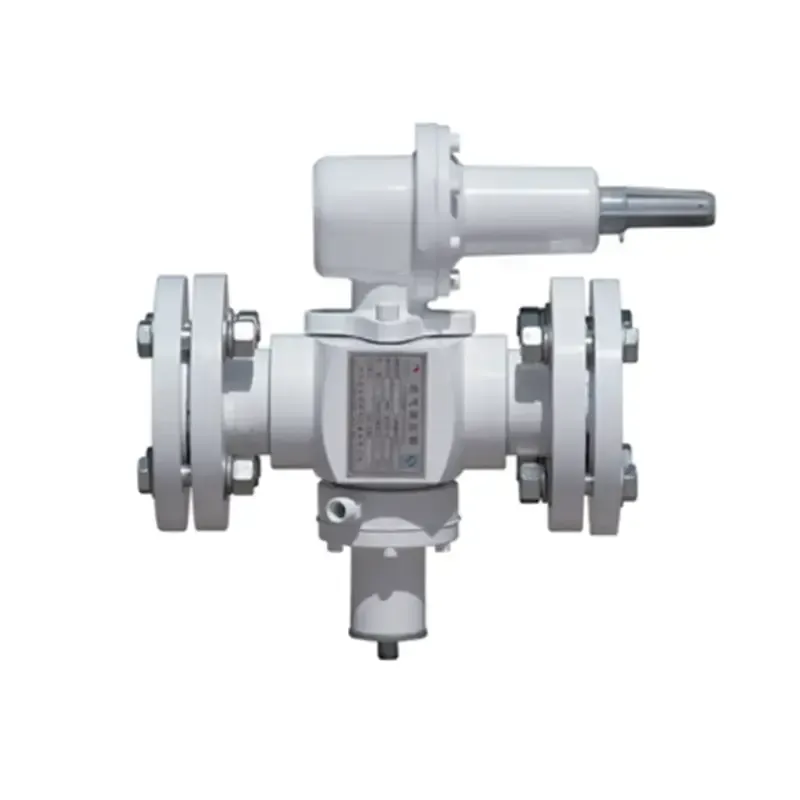
Dec . 04, 2024 15:03
Back to list
Electric Control Valve Adjustment for Enhanced Performance and Efficiency
Understanding Electrical Regulation Valves
Electric regulation valves (صمام تنظيم كهربائي) are essential components in various industrial applications, particularly in the fields of automation, HVAC (heating, ventilation, and air conditioning), and water management systems
. These valves control the flow of electricity or fluid in a system, ensuring optimal performance and safety. In this article, we will explore the concept, functionality, types, and applications of electric regulation valves.What is an Electric Regulation Valve?
An electric regulation valve is a device that controls the flow of a medium—be it gas, liquid, or electricity—through a system. The regulation is typically achieved through an electrically actuated mechanism that opens, closes, or modulates the valve position to achieve the desired regulation of flow or pressure. These valves are critical for maintaining consistent operation within various systems while minimizing waste and preventing damage due to overpressure or flow rates.
How Do Electric Regulation Valves Work?
Electric regulation valves operate using a combination of electrical signals and mechanical components. The key components include
1. Actuator This is the electrical part of the valve that receives control signals and translates them into mechanical movement. Actuators can be either on/off or modulating types. On/off actuators simply open or close the valve, while modulating actuators can control the position of the valve continuously, allowing for precision in flow regulation.
2. Valve Body This is the physical structure of the valve through which the medium flows. Depending on its design and materials, the valve body can be suited for specific applications, from high-pressure to corrosive environments.
3. Control System Electric regulation valves are often integrated with a control system that manages the valve's operation. This system may include sensors that monitor pressure, temperature, or flow rates, and it sends corresponding electrical signals to the actuator to adjust the valve position accordingly.
Types of Electric Regulation Valves
There are several types of electric regulation valves, each suited for different applications
1. Globe Valves These are designed for regulating flow. They feature a movable disk or plug that can be adjusted to change the flow area, providing precise control.
صمام تنظيم كهربائي

2. Butterfly Valves These valves use a rotating disc to control flow. They are ideal for applications that require quick opening and closing, making them suitable for large volume flows.
3. Ball Valves These valves utilize a spherical disc to control flow and offer low resistance when fully opened. They are widely used for on/off control and are known for their durability.
4. Solenoid Valves These are electromechanical valves used for controlling fluid flow. They are often used in automation systems for precise control in machinery and process industries.
Applications of Electric Regulation Valves
Electric regulation valves find their applications across various sectors, including
- HVAC Systems In heating and cooling systems, these valves help regulate temperature and airflow, ensuring comfort and energy efficiency.
- Water Treatment In municipal and industrial water treatment facilities, electric regulation valves manage the flow of chemicals and water, enhancing the purification process.
- Industrial Manufacturing These valves are used to regulate materials in manufacturing processes, ensuring consistent production flows and minimizing waste.
- Energy Generation In power plants, electric regulation valves control the steam and water flow crucial for electricity generation, thereby balancing supply and demand effectively.
Conclusion
Electric regulation valves are indispensable elements in modern industrial systems, promoting efficiency, safety, and control. Their ability to regulate flow and pressure electronically offers enhanced precision, contributing to the overall effectiveness of various applications. Understanding their functionality and types can aid in selecting the appropriate valve for specific needs, ensuring reliable operation and performance in critical systems. As technology continues to advance, the role of electric regulation valves will only become more significant in achieving automation and operational excellence across diverse industries.
Next:
Latest news
-
Safety Valve Spring-Loaded Design Overpressure ProtectionNewsJul.25,2025
-
Precision Voltage Regulator AC5 Accuracy Grade PerformanceNewsJul.25,2025
-
Natural Gas Pressure Regulating Skid Industrial Pipeline ApplicationsNewsJul.25,2025
-
Natural Gas Filter Stainless Steel Mesh Element DesignNewsJul.25,2025
-
Gas Pressure Regulator Valve Direct-Acting Spring-Loaded DesignNewsJul.25,2025
-
Decompression Equipment Multi-Stage Heat Exchange System DesignNewsJul.25,2025

